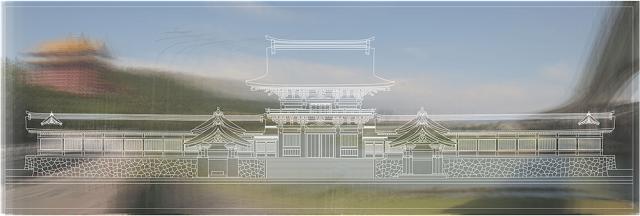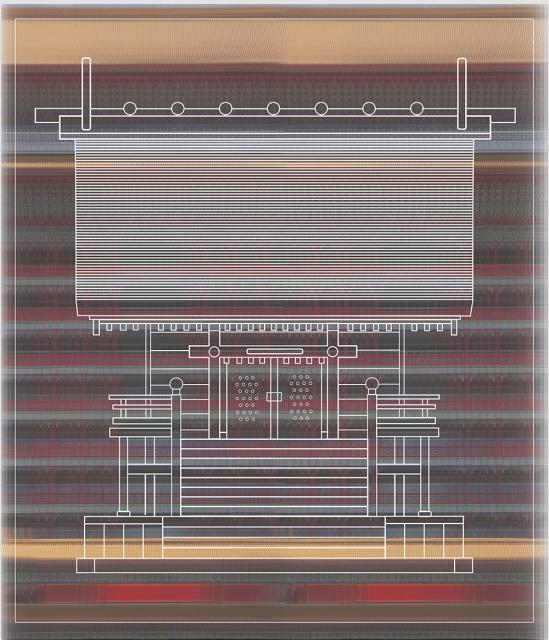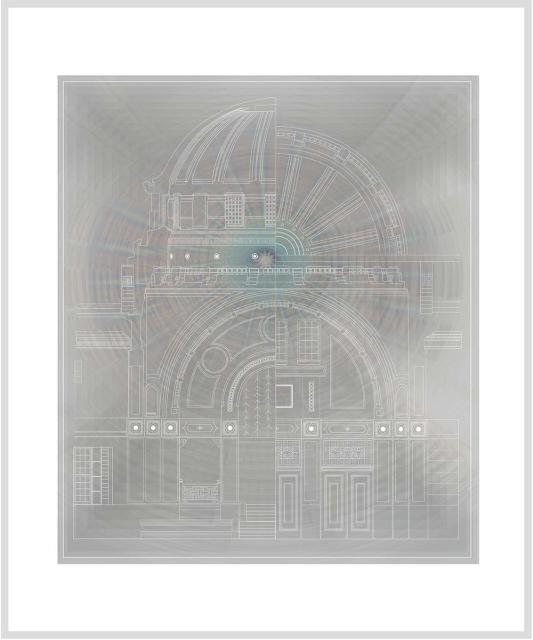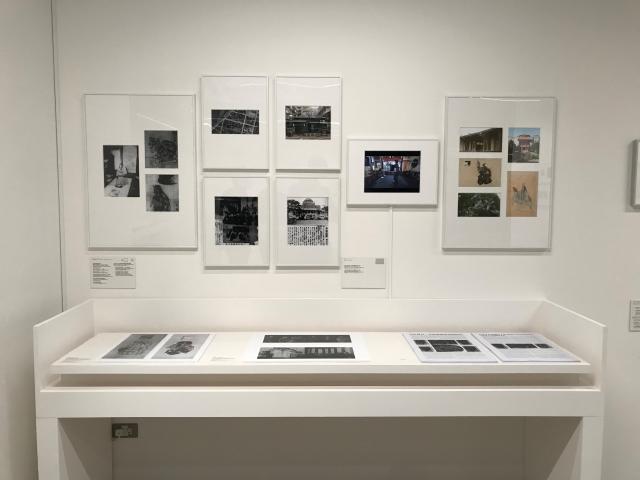陳飛豪|Chen Fei-hao
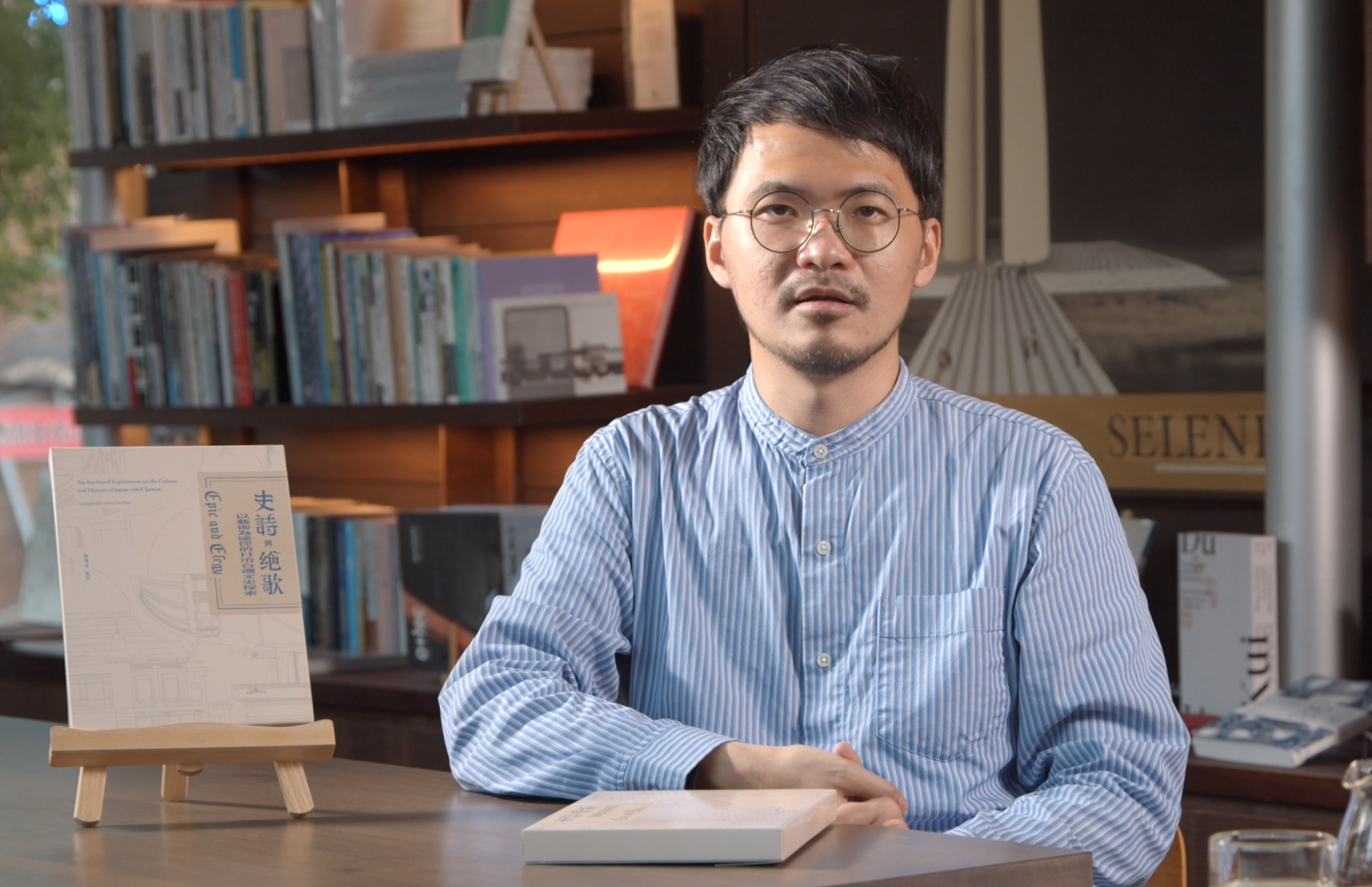
陳飛豪,生於1985 年。擅長文字寫作並運用觀念式的攝影與動態影像詮釋歷史文化與社會變遷所衍生出的各種議題,也將影像與各種媒介如裝置、錄像與文學作品等等結合,探討不同媒介間交匯結合後所產生的各種可能性。曾參與2016年台北雙年展、台北國際藝術村「鏘條通」-2017街區藝術祭、2018年關渡雙年展、2019年台灣當代藝術實驗場之「妖氣都市:鬼怪文學與當代藝術特展」、2021年國家攝影文化中心的「舉起鏡子迎上他的凝視—臺灣攝影首篇(1869-1949)」以及2020/2021東京雙年展。
Chen Fei-hao, born in 1985, is clever at writing and resorting to conceptual photography and moving images to interpret various issues associated with history and culture as well as social changes, and he also combines images with such media as installations, videos, and literature to probe into the possibilities of the convergence among different media. He was the participating artist of 2016 Taipei Biennale, 2017 "Jodori Khiang-Community Artfest" at Taipei Artist Village, “Yao-Chi City: Taiwan Paranormal Literature and Contemporary Art Exhibition”at Taiwan Contemporary Culture Lab, "Shattered Sanctity" at the Museum of Contemporary Art Taipei and Taiwan Air Force Innovation Base (TAF),"Hold the Mirror up to His Gaze: the Early History of Photography in Taiwan (1869-1949)", Taipei National Center of Photography and Images. 2020/2021 Tokyo Biennale.
▌個 人 簡 歷 ∣ Curriculum Vitae
陳飛豪|Chen,Fei-hao
出生於1985年
現工作生活於台灣台北
▌學 歷 ∣ Education
| 國立臺北藝術大學藝術跨域研究所 |
| 銘傳大學新聞系 |
▌駐 村 ∣ Artist-in-Residence
| 2018/07 | 新北方美術俱樂部東京與福島駐村研究:西川滿「人間之星」創作計劃 | |
| 2017/07 | 京都造型藝術大學駐村研究:關渡美術館對等駐村交換計畫 | |
▌演 獎 ∣ Speech
| 2018/12 | 大臺北當代藝術雙年展《超日常》:藝術書寫工作坊I。台灣新北。 | |
| 2018/10 | 從鶴城到華麗島:西川滿家族的故事。新月社。台灣台北。 | |
| 2018/09 | 從Taihoku到Taipei─以神社為連結場域的台北城想像,TKG+ Projects,台灣台北。 | |
| 2018/08 | MeetingNML 25: 西川滿(Mitsuru Nishikawa)與人間之星: 創作生命與國族政治間的想像與投射,在地實驗Etat Forum,台灣台北。 |
|
| 2017/09 | 家族照相簿--家族、國族、城市空間為基底的創作實踐, 築城記:桃園城中藝術行動,台灣桃園。 |
|
| 2017/08 | PHOTO TALKS:陳飛豪 x《家庭照相簿中的日治台北城》, Lightbox 攝影圖書室,台灣台北。 |
|
▌獎 助 ∣ Subsidy
| 2017/09 | 豐饒海之島:台灣近代史書寫與錄像創作計劃,國家文化藝術基金會美術類創作補助。 | |
| 2016/10 | 台北稻荷神社檔案重構計畫,台北市文化局美術類創作補助。 | |
▌表 演 ∣ Performance
| 2018/08 | 島嶼酒吧-台北藝術節,中山堂,台灣台北。 | |
▌典 藏 ∣ Collectible
| 2020/12 | 〈女誡扇綺譚〉與〈惠蓮的扇子〉,文化部藝術銀行典藏。 | |
| 2014/06 | 《鐵道地景記憶:高鐵風景》,文化部藝術銀行典藏。 | |
▌展 覽 ∣ Exhibition
| ◇個 展 | ||
| 2017/09 | 失效的神話-陳飛豪個展,朝代畫廊,台灣台北 | |
| 2015/03 | 記憶另存,東門美術館,台灣台南 | |
| ◇聯 展 | ||||
| 2021/03 | 舉起鏡子迎上他的凝視—臺灣攝影首篇(1869-1949),國家攝影文化中心,台灣台北。 | |||
| 2020/01 | 《我們必然相遇》第一章:螢幕裡湧出許多帶著傷痕的人, 他們對我視若無睹,與我擦身而過,關渡美術館,台灣台北。 |
|||
| 2019/08 | 《我們必然相遇》第一章:螢幕裡湧出許多帶著傷痕的人, 他們對我視若無睹,與我擦身而過,LOOP ALT SPACE,韓國首爾。 |
|||
| 2019/07 | 妖氣都市:鬼怪文學與當代藝術特展,台灣當代文化實驗場,台灣台北。 | |||
| 2019/02 | 玻璃總是要碎的,TKG+ Project,台灣台北。 | |||
| 2019/01 | 府城榮光,臺南市美術館一館,台灣台南 | |||
| 2019/01 | 虛寫邊界,關渡美術館,台灣台北。 | |||
| 2018/09 | 2018關渡雙年展-給亞洲的七個提問,關渡美術館,台灣台北。 | |||
| 2018/08 | 黑船、文明,芻言和 ____ 的足跡: 從近代日本到東亞當代藝術,台北日動畫廊,台灣台北。 |
|||
| 2018/07 | 華麗島: 會津出身的文化人-西川滿熱愛的台灣 心繫的日本,福島縣立博物館,日本福島。 | |||
| 2018/07 | Taiwan Connection,齋藤清美術館,日本福島。 | |||
| 2018/04 | 從無中生來,好思當代,台灣台北 | |||
| 2017/09 | 台灣當代一年展,花博公園爭艷館,台灣台北 | |||
| 2017/09 | 「鏘條通」-2017街區藝術祭,台北國際藝術村,臺灣台北 | |||
| 2017/07 | 真實的餘燼,朝代畫廊與青雲畫廊,臺灣台北 | |||
| 2017/04 | 破碎的神聖,台北當代藝術館與空總創新基地,臺灣台北 | |||
| 2016/09 | 台北雙年展-當下檔案.未來系譜:雙年展新語,台北市立美術館,臺灣台北 | |||
| 2016/04 | Young Art Taipei 台北當代藝術博覽會,喜來登大飯店,臺灣台北 | |||
| 2016/04 | 另一觀點,好思當代新竹空間,臺灣新竹 | |||
| 2016/03 | 登場2016,朝代畫廊,臺灣台北 | |||
| 2016/03 | 另一觀點,好思當代,臺灣台北 | |||
| 2016/03 | 2016高雄獎,高雄市立美術館,臺灣高雄 | |||
| 2015/09 | 高雄漾藝術博覽會,駁二藝術特區,臺灣高雄 | |||
| 2015/05 | 第十三屆桃源創作獎聯展:天火同人,桃園展演中心,臺灣桃園 | |||
| 2015/02 | 「地方・記憶・時間流─紀實攝影與當代藝術的對話」,苗栗客家文化園區,台灣苗栗 | |||
| 2015/01 | 「大景」聯展,絕對空間,台灣台南 | |||
| 2014/11 | Taipei Art Photo 台北攝影藝術博覽會,華山1914 文創園區,台灣臺北 | |||
| 2014/09 | 新樂園第八屆Emerge 新秀展新銳展,新樂園藝術空間,台灣臺北 | |||
| 2014/07 | Parola- 話語,文大推廣部大廈館,台灣臺北 | |||
| 2014/06 | Vago Europa 迷走歐洲,麼八二空間,台灣台南 | |||
| 2014/05 | 第十二屆桃源創作獎聯展:十二維度,桃園市文化局,臺灣桃園 | |||
| 2013/10 | 初啼攝影思辯No.4 ,TUTTI SPACE ,台灣臺北 | |||
| 2012/12 | 新北市創作新人獎聯展,新北市藝文中心,台灣新北市 | |||
| 2011/10 | 後設溝通,台灣攝影博物館預備處,台灣台北。 | |||
| 2011/07 | 夏綠地- 牯嶺南海社區劇場,國北教大南海藝廊,台灣台北。 | |||
| 2011/03 | 全平面樣態,台灣攝影博物館預備處,台灣台北。 | |||
| 2010/12 | EPSON 百人聯展- 社會地景,台北光點,台灣台北。 | |||
| 2010/09 | 因為想看見天空,1839 little gallery ,台灣台北。 | |||
| 2008/12 | 2008 台灣攝影藝術新人獎聯展,爵士藝廊,台灣台北。 | |||
| 2007/08 | 南國,元智大學MUSEUM CAFÉ ,台灣桃園。 | |||
▌獲 獎 ∣ Award
| 2016/01 | 高雄獎入選 |
| 2015/03 | 台南新藝獎入選 |
| 2014/05 | 桃源創作獎入選 |
| 2012/12 | 新北市創作新人獎入選 |
| 2012/01 | 雙河灣雜誌經典書評獎佳作 |
| 2008/12 | 2008 台灣攝影藝術新人獎佳作 |
▌ Curriculum Vitae
陳飛豪|Chen,Fei-hao
Born in 1985
Work and live in Taipei, Taiwan
▌ Education
| Taipei National University of the Arts, Graduate Institute of Trans-disciplinary Arts |
| MingChuan University, Department of Journalism |
▌ Artist-in-Residence
| 2018/07 | Shin kitakata art club, Residency in Tokyo and Fukushima, Project of Star of human: research of Nishikawa Mitsuru |
|
| 2017/07 | Residency program of KuanDu Museum: Kyoto university of art and design | |
| 2016/09 | New Taipei City 435 Art Zone Artist studio residency. | |
▌ Speech
| 2018/12 | Daily+: Greater Taipei Biennial of Contemporary Art:Art Writing Workshop。 New Taipei, Taiwan. |
|
| 2018/09 | Metahistory│Screening and Talk From Taihoku to Taipei — Reimagine Taipei through the City's Shrines, TKG+ Projects, Taipei Taiwan. | |
| 2018/08 | Nusantara Archive Project #8: Mitsuru Nishikawa and“Star of Human, Etat Forum, Taipei Taiwan. |
|
| 2017/09 | ArtTaoyuan: Family, Nation and the Research of city | |
| 2017/08 | PHOTO TALKS:Chen,Fei-hao x Family Album and Taipei city in Japan colonial period,Lightbox Library, Taipei Taiwan. | |
▌ Performance
| 2018.08 | Island Bar- Taipei art festival ,Zhong-Shan Hall , Taipei, Taiwan. | |
▌ Collectible
| 2020 | Strange Tale of the Bridal Fan and Eiren’s Fan , Art Bank young artists collection project. |
| 2014 | The landscape memory of railway: Taiwan High Speed rail (THSR) , Art Bank young artists collection project. |
▌ Exhibition
| ◇ Solo exhibitions | ||
| 2017 | Ineffective Myth, Dynasty Gallery, Taiwan Taipei | |
| 2015 | Next Art Tainan Awards: Save memory as, Licence Art Gallery, Tainan Taiwan | |
| 2010 | Wanna see the sky, 1839 little gallery, Taipei Taiwan. | |
| ◇ Group exhibitions | ||||
| 2021.07 | Tokyo Biennale 2020/2021- Unseen Everyday Scene ― Purity×Earnestness×Deviation ―, Around Tokyo City, Tokyo Japan. |
|||
| 2021.03 | Hold the Mirror up to His Gaze: the Early History of Photography in Taiwan (1869-1949), Taipei National Center of Photography and Images. |
|||
| 2020.01 | WE ARE BOUND TO MEET Chapter One: Many wounded walk out of the monitor, they turn a blind eye and brush past me. Kuandu Museum , Taipei, Taiwan. |
|||
| 2019.08 | WE ARE BOUND TO MEET Chapter One: Many wounded walk out of the monitor, they turn a blind eye and brush past me. LOOP ALT SPACE. Seoul, Korea. |
|||
| 2019.07 | Yao-Chi City: Taiwan Paranormal Literature and Contemporary Art Exhibition , Taiwan Contemporary Culture Lab , Taipei, Taiwan. |
|||
| 2019.02 | It is the Fate of Glass to Break, TKG + Projects , Taipei, Taiwan. | |||
| 2019.01 | The Glory of Tainan, Tainan Art Museum , Tainan, Taiwan. | |||
| 2019.01 | On the Verge of Fiction, Kuandu Museum , Taipei, Taiwan. | |||
| 2018.09 | Kuandu Biennale - Seven Questions for Asia , Kuandu Museum , Taipei, Taiwan. | |||
| 2018.09 | Black Ships, Civilization, Remarks, and _____s’ Footprints: From Japanese Modern to East Asian Contemporary Art, galerie nichido Taipei , Taipei, Taiwan. | |||
| 2018.07 | Formosa (The Beautiful Island),Fukushima Museum, Fukushima, Japan | |||
| 2018.07 | Taiwan Connection, Kiyoshi Saito Museum of Art, Fukushima, Japan. | |||
| 2018.04 | “We can’t come from nothing “–eight strategies for undoing borders and rethinking identities, HaoHaus Taipei, Taiwan Taipei | |||
| 2017.09 | 2017 Taiwan Annual, Taipei Expo Park, Taiwan Taipei | |||
| 2017.09 | 2017 Jodori Khiang-Community Artfest, Taipei Artist Village, Taiwan Taipei | |||
| 2017.07 | The Embers of Truth, Dynasty Gallery x Cloud Gallery Cooperation Exhibition, Taiwan Taipei |
|||
| 2017.04 | Shattered Sanctity, MOCA Taipei and TAV Innovation Base, Taiwan Taipei | |||
| 2016 | Taipei Biennial- Gestures and archives of the present, genealogies of the future: A new lexicon for the biennial, Taipei Fine Art Museum, Taipei Taiwan | |||
| 2016 | Young Art Taipei, Sheraton Grand Taipei Hotel, Taipei Taiwan | |||
| 2016 | Alternative Vision, HaoHaus HsinChu, HsinChun Taiwan | |||
| 2016 | Rising Show 2016, Dynasty Gallery, Taipei Taiwan | |||
| 2016 | Alternative Vision, HaoHaus Taipei, Taipei Taiwan | |||
| 2016 | 2016 Kaohsiung Awards, Kaohsiung Taiwan | |||
| 2015 | Young Art Kaohsiung, Pier-2 art center, Kaohsiung Taiwan | |||
| 2015 | Harmony in Diversity,Taoyuan Cultural Department, Taoyuan Taiwan | |||
| 2015 | Site –Memory- Time: the Dialogue between Documentary Photography and contemporary art, Miaoli Hakka Cultural District, Miaoli Taiwan | |||
| 2015 | The Great Scenery, Absolute Art Space, Tainan Taiwan. | |||
| 2014 | Taipei Art Photo ,HuaShan Creative Park ,Taipei Taiwan. | |||
| 2014 | Sugar Substitute, SLY Artspace, Taipei Taiwan | |||
| 2014 | Vago Europe, 182artspace, Tainan Taiwan | |||
| 2014 | 12-Dimension,Taoyuan Cultural Department, Taoyuan | |||
| 2013 | Art talk exhibition, TUTTI Space, Taipei City | |||
| 2012 | the group exhibition of Arising artist award of New Taipei City | |||
| 2011 | Meta-communication,Taiwan Photo Museum,Taipei Taiwan. | |||
| 2011 | Guling Nanhai Community Theater -REAL PARK 2011, Nan-hai Gallery,Taipei Taiwan. |
|||
| 2011 | The Whole plane,Taiwan Photo Museum,Taipei Taiwan. | |||
| 2010 | Epson Photo100-Landscape,SPOT-Taipei Film House,Taipei Taiwan. | |||
| 2008 | "2008 Taiwan Emerging Photographic Artist Award"group "2008 Taiwan Emerging Photographic Artist Award"group | |||
▌ Award
| 2015 | Next Art Tainan Awards |
| 2014 | Taoyuan Contemporary Awards |
| 2012 | Arising artist award of New Taipei City |
| 2012 | Two River Magzine,The classical book reviews award. |
| 2010 | Selected as the artist of "Epson Photo100-Landscape exhibition". |
| 2008 | Taiwan Emerging Photographic Artist Award. |
創作自述 Artist Statement
國家神域
日治時代,台灣的神社是日本統治的重要像徵。戰後,國民政府刻意將其拆除或改裝成其他政治意涵濃厚的建築如忠烈祠或圓山飯店等。本作將多角度拍攝神社遺跡上的現有建築如忠烈祠等,將其照片堆疊,隱喻時間流逝後的模糊記憶,最後將此曾在的神社繪製於壓克力,置於照片上如透視鏡般投射出消逝的記憶。
Sanctuary of the nation
From 1895 to 1945, Taiwan was part of Japan as a colony. During this period, Japanese government built over 200 Japanese shrines in Taiwan as the holy and inviolable symbol to show the political power. After WWII, Taiwan was occupied and ruled by the Nationalist government from China, all the Japanese shrines were destroyed or rebuild as Chinese palatial architecture such as Grand Hotel and National Revolutionary Martyrs' Shrine. In order to show this political and historical transformation on those architectures, I took the existing Chinese palatial architecture with different angles, and piled them up composing a hazy picture as an analogy of time and memory. Then, I made an acrylic, which the Japanese shrine’s sketch was carved on, fixing it on the hazy picture with a frame as comparison, showing the regime change in Taiwanese history.
喜多舞台、女流能樂與福爾摩莎(藝術研究)
能樂在日治時期事實上是一個十分微妙的存在,作為日本重要的傳統表演藝術,能樂表演與欣賞自然是當時在臺日人常見的藝文活動。雖說能樂具有一定的美學高度,也與日本傳統政治具有一定連結,但相對於臺灣本土已具發展規模且大眾化的漢人傳統戲曲與現代化的新劇,在一定的門檻下,能樂大多限於當時的在臺日人族群,也因此喜多舞台的發現仍是一個尚待定義的存在:我們如何看待這段幾乎已塵封在臺灣歷史角落的日本傳統藝術脈絡?我們要如何重新探索這門古老表演藝術與臺灣過去帝國殖民史的關係?這是本計畫試著以喜多舞台為中心所開啟的提問與對話。
首先,本計畫的討論焦點是,根據作家西川滿的大河歷史小說《臺灣縱貫鐵道》中的書寫,曾經以能畫入選第一屆臺展的能畫家武部竹令(書中稱為武部竹次郎),其實也是一名喜多流的能劇表演者,他曾在1895年乙未戰爭從軍時期的臺北始政式中,擔任餘興節目能劇(仕舞)《八島》的表演工作。而這明顯看出能劇在日本古代與武士階層間的密切關係也延續到了明治時期帝國建立後的現代化軍隊。即使能劇用以教化臺灣人民的能力有限,它仍在各種國家慶典,如神社祭典與國際博覽會中出現,成了當時政權的文化符號之一。
另一焦點則是,殖民地臺灣因距離日本以男性為主的宗家中心較遠,因此由於性別限制,常被視為「業餘」的女性表演者,反而獲得了較多的表演機會。以喜多流來說,其設有喜多婦人會的組織,該流派的年輕女性能樂表演者三宅康子,便在當時臺灣重要宗教設施的建功神社的1929年大祭中,表演奉納能樂《月宮殿》。有趣的是,二戰日本戰敗後,全數在臺日人都被遣返,喜多稽古舞台也輾轉成為現今的大村武居酒屋。2020年,身為灣生後代的能劇工作者岡部千枝女士組織新的臺灣喜多會,該會成員也幾乎以女性為主,並於今年2月9日於大村武居酒屋舉行稽古表演會,應是此地1945年戰後睽違七十多年的能劇表演。而這類以性別置換與女流能樂回應強調男性傳承的能樂藝術與陽性帝國敘事,這類橫跨殖民歷史、地方記憶與性別意識的嶄新想像將如何成形,是本計畫試圖梳理與思考的重點。
"Kita Stage, Female Nohgaku and Formosa(Artist Research)"
During the Japanese colonial period, Noh theater had only a low-key presence in Taiwan. Noh was then one of Japan’s major traditional forms of performing arts, and Japanese living in Taiwan held a natural appreciation for it. Although Noh has aesthetic value in its own right, it also has certain traditional connections to Japanese politics. Noh is very different both from the traditional Chinese plays watched by Taiwan’s majority Han population and from modern theater. Interest in Noh was primarily limited to Japanese residents of Taiwan, and as a result the existence of these Noh theaters in Taiwan is wrapped in mystery. How should we view the cultural context of these Japanese traditional arts that has almost been forgotten in the history of Taiwan? How should we evaluate these arts in connection to colonialism? This project aims to open a dialogue about this through exploring the history of the Kita Stage.
This project focuses on a historical novel by Nishikawa Mitsuru, The Taiwan Cross-Island Railway. It tells the story of Takebe Chikurei, a Noh-ga artist––Noh-ga is a style of paintings of Noh theater––who was also an actor. In the story, Takebe is selected for Taiwan’s first exhibition of Noh-ga. In 1895, at the handover ceremony organised during the Japan’s conflict with the armed forces of the Republic of Formosa, he performed the Noh play, Yashima, a type of Noh performance referred to as the Shimai. From this performance, one can see links between Noh theater and the Japanese military, namely the modern army that came into being following the Meiji Restoration. Although Noh was limited in its function of “civilizing” Taiwanese, Noh performances were held during national ceremonies and dedications of shrines and exhibitions, and it stood as a cultural signifier of the Japanese political regime.
Another key point is that Taiwan was very distant from Japan and allowed different gender compositions in the Noh theater. In Japan, Noh was predominantly male, and female actors were generally only considered as amateurs. But in Taiwan, female actors had more opportunities to perform. The group of female performers in the Kita Women Group included a young girl named Yasuko Miyake, who acted in the Noh play, Gekyuden, at the dedication of the Kenkou Shinto Shrine in Taipei in 1929. After Japan’s defeat in World War II, all Japanese in Taiwan were repatriated to Japan. The Kita Stage eventually became the izakaya in today’s Omura Takeshi Building. But in 2020, a New Kita Group was established in Taiwan by Okabe Chie, who is descended from a family of Japanese born in Taiwan. Most members of the New Kita Group are women. When they performed at the Omura Takeshi Izakaya on Feb 9, 2020, it marked the first time that a Noh performance had taken place there since 1945. We hope to use female performers to subvert the male-dominated art of Noh and its links to masculine imperialist history. We further hope to establish a trans-colonial history and new ways of imagining local memory and sexual identity. These are the key issues we hope to


